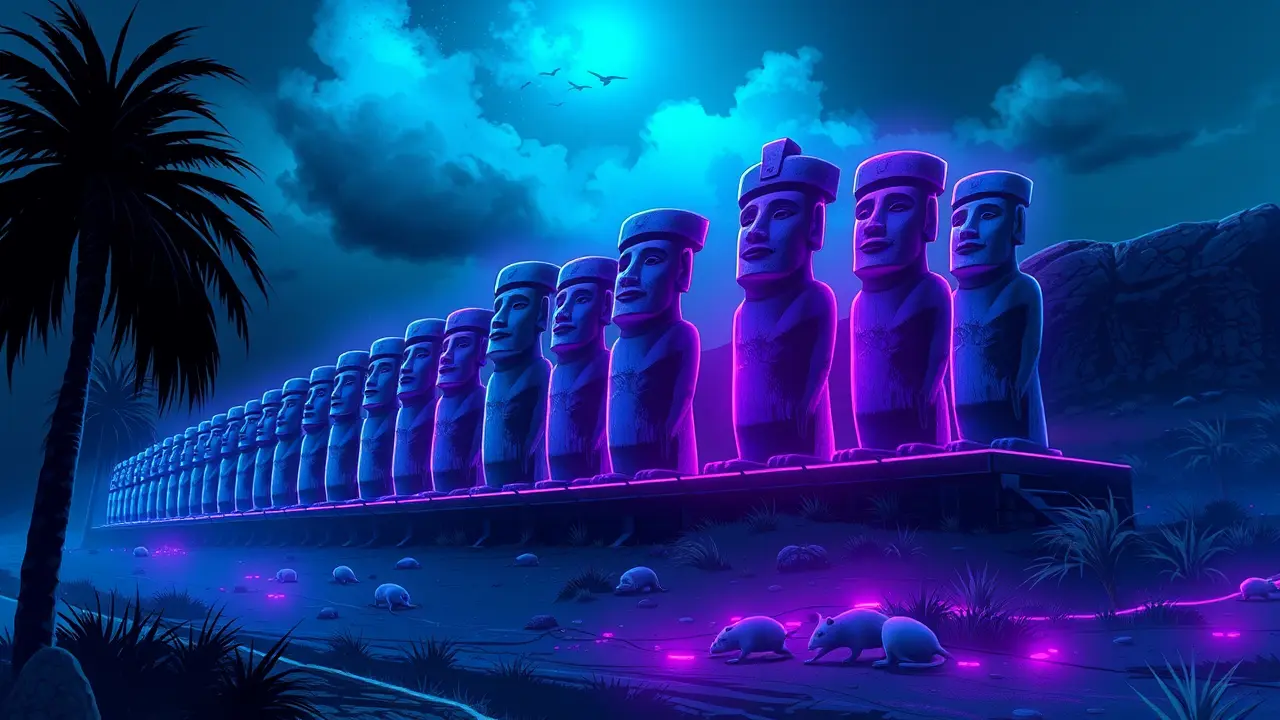
SciencearchaeologyAncient Civilizations
Rats Contributed to Easter Island Deforestation, Study Finds.
RA
Rachel Adams
5 hours ago7 min read1 comments
For generations, the haunting narrative of Rapa Nui, or Easter Island, has served as a stark parable of ecological collapse, a cautionary tale pinned squarely on the shoulders of its ancient Polynesian inhabitants. The prevailing story told of a people who, in a tragic display of short-sightedness, chopped down every last palm tree to erect their monumental moai statues, ultimately triggering a societal unraveling.However, a groundbreaking new study is forcing a dramatic rewrite of this oversimplified history, introducing a new, furry culprit into the equation: the rat. This isn't about assigning blame to a single species but understanding a complex ecological perfect storm.When Polynesian settlers first arrived on the island's pristine shores around 1200 AD, they inadvertently brought with them the Pacific rat (Rattus exulans) as stowaways. With no natural predators, these rodents experienced a population explosion of staggering proportions, with some estimates suggesting their numbers quickly swelled into the millions.The real ecological impact came from their diet. The island's dominant Jubaea palm trees, which grew slowly and produced massive seeds, were a veritable feast for these prolific breeders.The rats didn't just nibble on seeds; they devoured them, effectively severing the forest's lifecycle at its source. Each consumed seed was a future tree that would never take root, a silent, incremental act of deforestation happening in the undergrowth, completely independent of human axes.This creates a far more nuanced and compelling picture than the old ecocide myth. It wasn't a simple case of human folly versus nature.Instead, it was a synergistic catastrophe. The human population, which was likely never as large as once thought, certainly used wood for construction, for canoes, and for the intricate system of moving their iconic statues.But they were not working alone. They were partners in ecological change with an army of millions of rodents.The rats, acting as a pervasive, biological force, systematically prevented forest regeneration, while humans selectively harvested the mature trees. This one-two punch against the ecosystem was devastating.The consequences unfolded over centuries. Without trees, the soil eroded, leaching it of vital nutrients and devastating agricultural potential.The loss of palm wood meant no more seafaring canoes, cutting off the islanders from the rich deep-sea fishing that had sustained them and isolating them from the wider Polynesian world. The societal response to this escalating crisis is perhaps the most fascinating part of the story.As resources dwindled, the focus of their culture appears to have shifted from the competitive erection of moai to the intense, and often violent, competition for the remaining arable land, a period marked by the emergence of the so-called 'birdman cult'. This was not a society that passively accepted its fate; it was one that dynamically, and desperately, adapted to a new and harsh reality created by a chain of events they could never have fully foreseen.The lesson of Easter Island, therefore, is not a simplistic one about human greed. It is a profound lesson in unintended consequences and the fragility of isolated ecosystems.It demonstrates how the introduction of a single invasive species can interact with human activity to trigger a cascade of environmental changes with irreversible societal impacts. As we today grapple with our own global ecological crises, from climate change to biodiversity loss, the story of Rapa Nui stands as a powerful reminder that the drivers of environmental collapse are rarely singular, and the smallest actors can sometimes play the most devastating roles.
#archaeology
#Easter Island
#deforestation
#rats
#environmental history
#featured
Stay Informed. Act Smarter.
Get weekly highlights, major headlines, and expert insights — then put your knowledge to work in our live prediction markets.
© 2025 Outpoll Service LTD. All rights reserved.